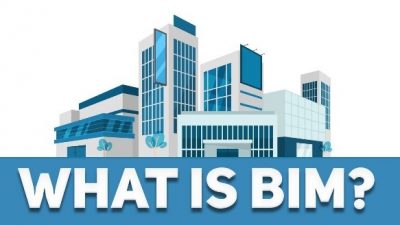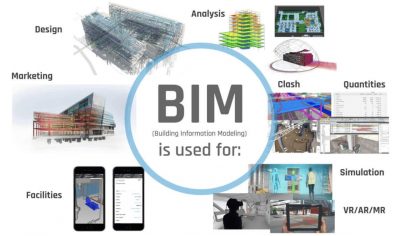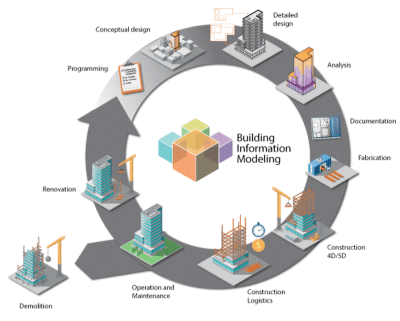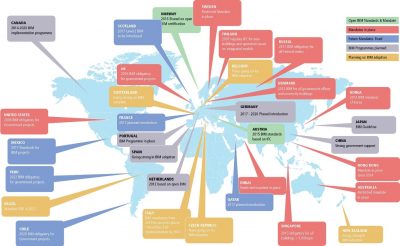
What is BIM?
In 1974 Charles Eastman outlined a concept he called “Building Description System (BDS)” and this became the basis for modern BIM. BIM is an innovation of 3D model-based process in Designing, Engineering, Construction and Operation. It is a transforming the way of all sizes of construction projects that are designed, constructed, managed and delivered within time and budget and the core characteristics of BIM are:
-
It is the building process that provides every minute detail of the project (building or infrastructure) to all the stakeholders (Designer, Owner, Contractor, etc.). It is a revolutionary process that at any stage during the lifecycle, any stakeholder can conveniently obtain the right information which enable to take the required decision effectively.
-
Normal CAD enable to work in 3 dimensions i. e. length, breadth and depth, whereas, BIM are allowed to work in five dimensions, time and cost being the additional dimensions. Thus, it shall able to provide accurate cost, material estimation and precise time schedule.
-
Apart from representation of 3D geometric view of the structure, also, BIM provides a more comprehensive overview of the entire building process. It covers every component of the design to spatial relationships.
-
BIM design tools allows to obtain various views from a building model and to produce high-quality, accurate drawings which enable to gives a more realistic and accurate idea of the final structure.
BIM’s Benefits
There are many and highly valuable benefits of BIM within construction projects and some notable of them are:
-
Facilitate Coordination and Planning for all parties for efficient commencement and completion of the project.
-
Ensure all parties have a complete life-cycle view – enable them for timely interaction.
-
Model is available to commence the construction efficiently.
-
The detailed data can be summarized and but cannot be reversed.
-
Initially entered data can be improved and refined over life cycle.
-
Build data sustainment into business processes – keep data alive.
-
Use information and data to build trust – know data sources and users.
-
Clear and comprehensive contracts can be made for effective commencement and successful completion of project within time and budget.
-
Ensure the data can be externally accessible and protected.
-
Use standards and cloud storage to ensure long-term accessibility.
Future Prospects of BIM
Since it is a process that helps make design, engineering, construction and operational information accurate, accessible and actionable and due to transparency in accomplishment of the objectives, it is becoming more popular. Some of the facts about BIM’s future prospects are as follows:
-
It is growing fast and the market size is projected to grow from USD 4.5 billion in 2020 to USD 8.8 billion by 2025, at a compound annual growth rate (CAGR) of 14.5%.
-
A survey of BIM users has revealed the following statistics:
-
82% say that they achieved a positive ROI (Return on Investment).
-
25% state that an improvement in labor productivity.
-
84% say that it eliminates rework.
-
69% say that it reduces costs and material waste.
-
60% state that it engages the material supply chain earlier than mitigates risk.
BIM Adoption around the World
***** End of Article *****








